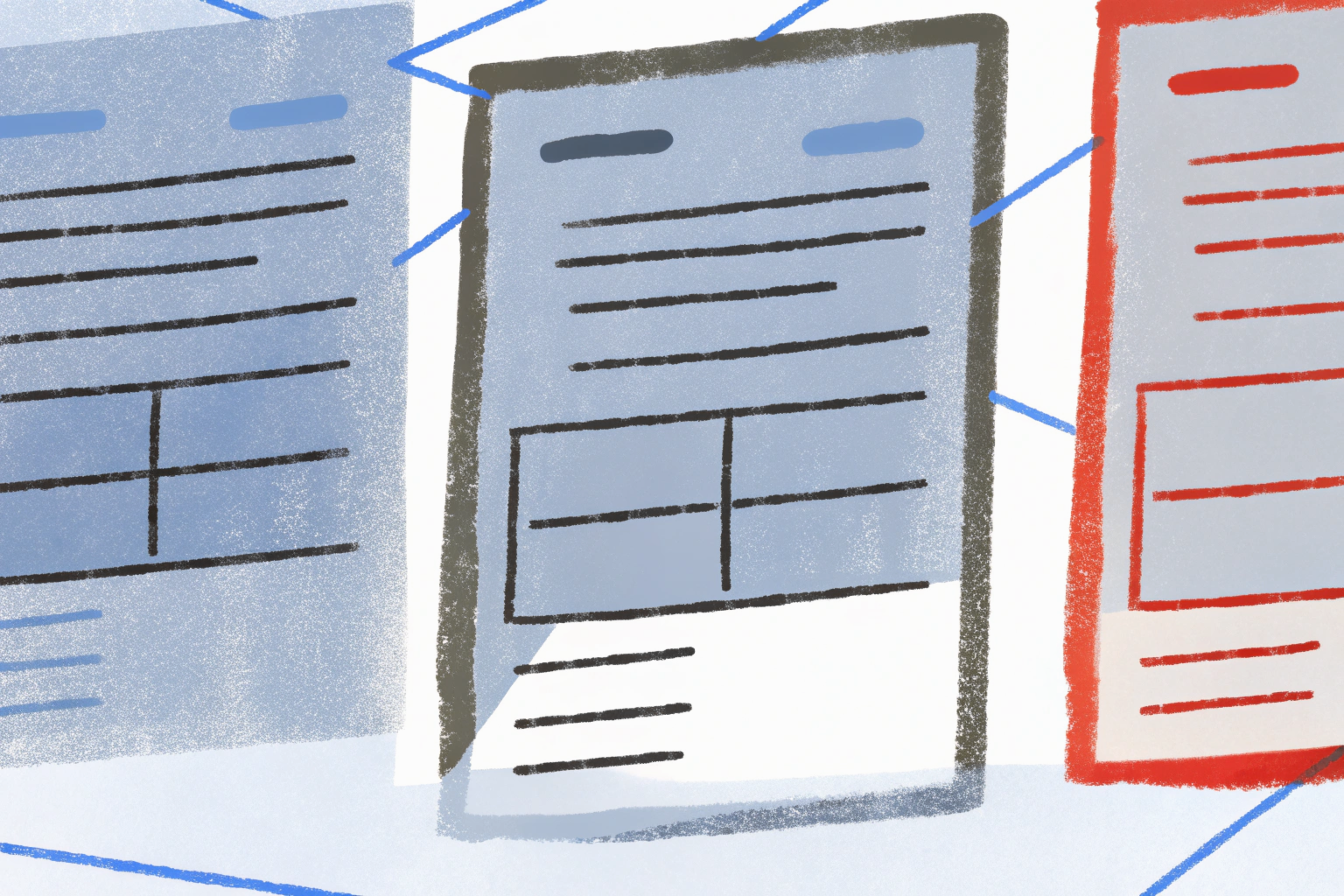Learn everything you need to know about invoice creation, sending, and tracking invoices. Streamline your small business invoicing and get paid faster!

Running a small business means paying close attention to every detail, including the business invoicing. In this guide we'll cover everything you need to know about invoice creation, sending, and tracking invoices. You'll also learn how to use invoice management strategies to improve cash flow and enhance professionalism.
Whether you're just starting out or looking to improve your invoicing process, this guide covers best practices to help you get paid faster, avoid common mistakes, and support business growth. You'll learn how to set clear payment terms, choose the right invoicing software, and create effective templates for smoother workflows.
Key Takeaways:
Learning about invoicing is key to ensuring smooth business processes. An invoice is issued as a legal document that protects your business and records important details like dates, product descriptions, and payment process terms. Understanding these basics ensures accuracy and compliance, whether you're launching a startup or freelancing.
An invoice is an official request for payment that outlines the goods or services provided. It includes itemized charges, due dates, and payment methods. Freelancers and business owners must clearly state their services and rates. There are various types of invoices, including recurring invoices for subscriptions and commercial invoices for international sales. Ensuring every invoice is issued correctly helps businesses maintain financial clarity.
Effective invoice management is essential for smooth business operations. Proper invoicing helps track cash flow, simplifies tax filing, and builds trust with clients. Incorrect or missing invoices can cause accounting errors and delayed payments. By setting up a structured invoicing process, businesses can ensure payments arrive on time and stay compliant with regulations.
Understanding the differences between invoices, receipts, and bills is crucial for maintaining proper financial records and ensuring smooth transactions.
Before goods/services are provided.
Properly distinguishing between these documents ensures better invoice management and financial organization.

Creating a good invoicing system needs focus and the right tools. This section covers essential components of a professional invoice and how to use the right tools for managing invoices effectively.
A professional invoice should have:
There are many invoice templates available online — using a clear, well-structured template ensures nothing important is missed, makes your invoices easier for clients to process, and saves time with consistent formatting.
Invoice numbering is a mandatory invoice field. They should be assigned in sequence, with the number of each new invoice increasing. An invoice number sequence should never include repeats or gaps.
There are many more methods of invoice numbering. Choose the one that best works for your business.
A 2023 study by Ardent Partners found that businesses can reduce administrative costs by 40% to 90% by automating their invoicing process, compared to doing it manually.
Tofu is an invoicing software that simplifies every step of the process - from creating polished, professional invoices to getting paid on time. It’s designed to save you time, reduce admin, and scale with your business.
Just need a one-off invoice? You can also download a free template if that’s more your style.
Create branded invoices and get paid faster with Tofu’s smart, mobile-friendly tools.
Creating and sending invoices efficiently is crucial for business growth. You can use manual methods or leverage invoicing software for automation. A well-structured invoice ensures clients understand the charges and payment terms.
You can start by downloading one of our free invoice templates (available in PDF, Word, or Excel format). Here’s how to create and send your invoice using a downloaded template:
For self-employed professionals, creating invoices is crucial to maintaining a good relationship with clients and ensuring timely payments. A well-written invoice not only clarifies the services rendered but also reflects the professionalism of your business.
A professional invoice helps you establish credibility and trust, ensuring clients are more likely to pay promptly.
When sending invoices to clients, the accompanying email is just as important as the invoice itself. A well-crafted invoice email can increase the likelihood of quick payment.
Sending invoices promptly and through the correct channels is vital for ensuring timely payments. There are a few methods to consider, each with its benefits.
Using these methods ensures that your invoices reach the right people and helps improve your payment process, making the entire invoicing cycle more efficient.
Using an invoicing app like Tofu to send invoices electronically ensures faster delivery and tracking. This method is preferred by most businesses today because it’s quick and efficient. With Tofu, sending invoices is flexible—just tap 'Share' to send via email, text message, WhatsApp, Slack, Telegram, or any other messaging app on your device. Plus, the app allows you to create and send invoices instantly, even while on-site, so you can bill clients right after completing a job—no need to wait until you're back at the office.
While less common in today’s digital world, some businesses still prefer sending paper invoices. However, unlike digital options, paper invoices cannot be created and sent on the go. If you choose this method, always confirm the invoice was received, and keep a record of all correspondence for future reference.
Getting payments on time is key for your business. Implementing best practices for managing invoices reduces late payments and improves overall efficiency.
To avoid overdue payments:
Invoice factoring allows businesses to sell unpaid invoices for immediate cash. This is useful when:
Match payments to invoices regularly to spot any mistakes. Here's how to do it:
Step 1
Action: Log all payments in your accounting system.
Purpose: Track the payment method and amount.
Step 2
Action: Check if the totals match the invoice.
Purpose: Make sure payments are correct.
Step 3
Action: Update records once payments are confirmed.
Purpose: Keep your records accurate.
Reconciling payments and invoices helps avoid mistakes and keeps your process smooth.
Errors in business invoicing can lead to delayed payments and legal complications. Here are some common mistakes to avoid:
Incorrect client names, missing service descriptions, or math errors can cause confusion. An accurate invoice should list every item clearly. Always check totals and descriptions before sending.
Using invoicing software can help spot inconsistencies. This reduces disputes. If errors do occur, handling them becomes easier with precise records.
Disorganized numbering or date formats can disrupt record-keeping. Each invoice should have a unique number and clear dates. An online invoicing system can auto-generate these for you.
Ambiguous payment terms or no follow-ups can lead to overdue invoices. Clearly state payment methods and deadlines. Send reminders 3-5 days before the due date.
If overdue, send a final invoice notice and request clarification. This helps avoid further delays.
Many businesses use invoicing software but overlook its features. Tools like automated calculations and PDF exports are available. Explore these to streamline your workflow.
A smooth invoicing process keeps your cash flow steady and your business running efficiently. Modern invoicing software isn’t just about automation—it also eliminates calculation mistakes, ensures consistency with standardized templates, and saves time with item libraries for frequently billed services.
The right invoicing tool doesn’t just reduce errors; it also helps you present a polished, professional image. With clean, well-structured invoices, you reinforce your credibility and make a strong impression on clients.
For skilled professionals, efficiency matters. With Tofu, you can create and send invoices instantly—right from the job site—without waiting to get back to the office. Whether you’re in construction, home services, or any hands-on profession, Tofu makes invoicing effortless on the go.
Make invoicing easy, eliminate errors, and showcase your professionalism with Tofu’s sleek, user-friendly invoicing app. Download now and see how simple it can be!
Send sleek, customizable invoices with built-in payment links or QR codes.
An invoice is a formal request for payment. It lists the transaction details, including the amount owed and payment terms. This helps ensure you get paid on time.
To make a professional invoice, include your business name and client details. Also, add an invoice number, issue and due dates, and itemized descriptions of services. Use payment terms and accepted payment methods. You can use templates or invoicing software to make it easier.
For sending invoices, use clear subject lines in your email. Attach the invoice as a PDF and include a brief message. Make sure the invoice is addressed correctly. Choose electronic invoicing for faster delivery and tracking.
To manage unpaid invoices, set up a follow-up routine with reminders at regular intervals. Use polite and professional communication to keep relationships strong. Include clear payment due dates and late payment penalties if needed.
Invoice factoring is when businesses sell their unpaid invoices to a third party for cash upfront. This can improve cash flow but may involve fees. Consider the pros and cons based on your business needs.
Avoid invoicing mistakes like errors in client names and amounts. Also, don't have inconsistent numbering or date formats. Don't forget to follow up on overdue invoices. Use invoicing software features wisely to avoid these mistakes.
When selecting invoicing software, focus on ease of use, mobile accessibility, and time-saving features. Look for features like an item library to quickly add services, a simple CRM to save client details, and customizable templates for a professional look. Integration with payment systems and clear financial tracking can also help streamline your workflow—so you spend less time on invoices and more time on your business.
From one-off jobs to growing your business, Tofu makes invoicing effortless.